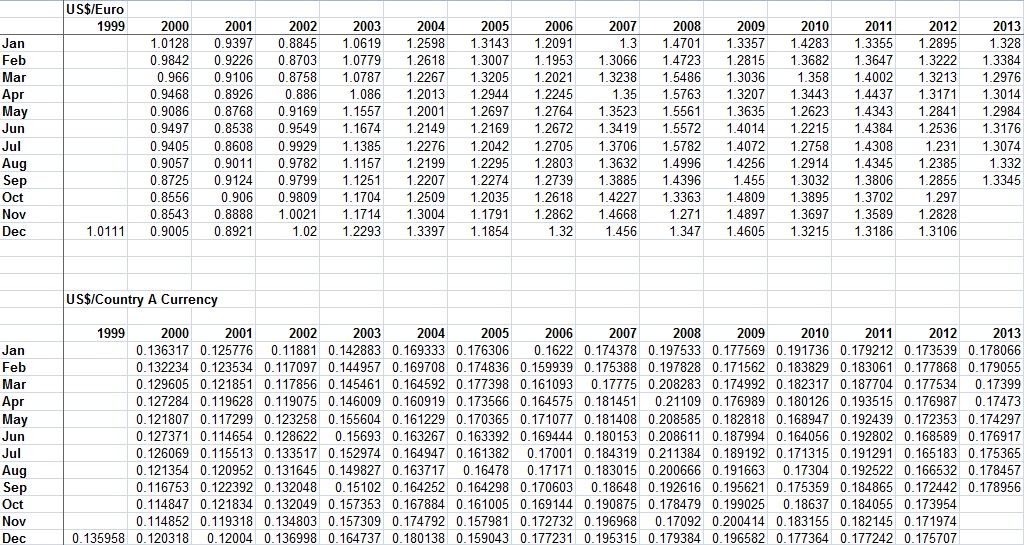Question 1: The International Monetary System: Exchange Rate Regimes
Below are data on (a) Monthly US$/Euro and US$/Country A currency exchange rates for December 1999-September 2013; (b) US and Country A monthly foreign exchange reserves December 1999-August 2013 and (c) Country A interest rates for January 2005-September 2013.
i) Apply the Reinhart (2000) methodology to the exchange rate and reserves data to identify Country A’s exchange rate regime.
ii) Utilize your above conclusion and the exchange rate, reserves and interest rate data to discuss the pressures on Country A’s exchange rate during the height of the recent financial crisis (2007-2008) and post-crisis.
Question 2: Monetary Unions
Below are the selected data on Country B for 10 years. Country B is a member of a monetary union with several other countries. During this 10 year period, the union central bank largely opted for monetary policy restraint and price stability in accordance with average economic developments in the monetary union.
A) In the absence of monetary policy and the exchange rate as stabilization instruments and given the monetary policy stance of the monetary union, briefly discuss the feasibility of using fiscal policy to stimulate the economy. Inform your discussion with a debt sustainability framework analysis in order to assess the “sustainable fiscal deficit.” Use the debt sustainability framework we discussed with regard to EMU convergence requirements and assume that a sustainable public debt/GDP ratio for Country B is the ratio achieved in year 10. Make sure to include a table with your debt sustainability calculations.
B) Discuss, illustrating with the appropriate AS/AD diagrams, why relinquishing monetary policy and exchange rate policy as stabilization instruments may prove costly for Country B. Assume that Country B lacks sufficient wage flexibility, labor mobility and integrated financial markets to adjust to shocks.
Note: Observe page limits, formatting guidelines and other instructions.
Use the “IMF Format” writing style.
Use one-inch margins, 12 point Times New Roman font size and single spacing.
Include and reference relevant charts and tables for a well-constructed answer. Points will be given for relevant charts and tables.
Page limits are text-only - any charts, tables etc. you choose to add are not included in the page limits. Cite all references (APA citation style is preferred). This applies to references outside of course material.
